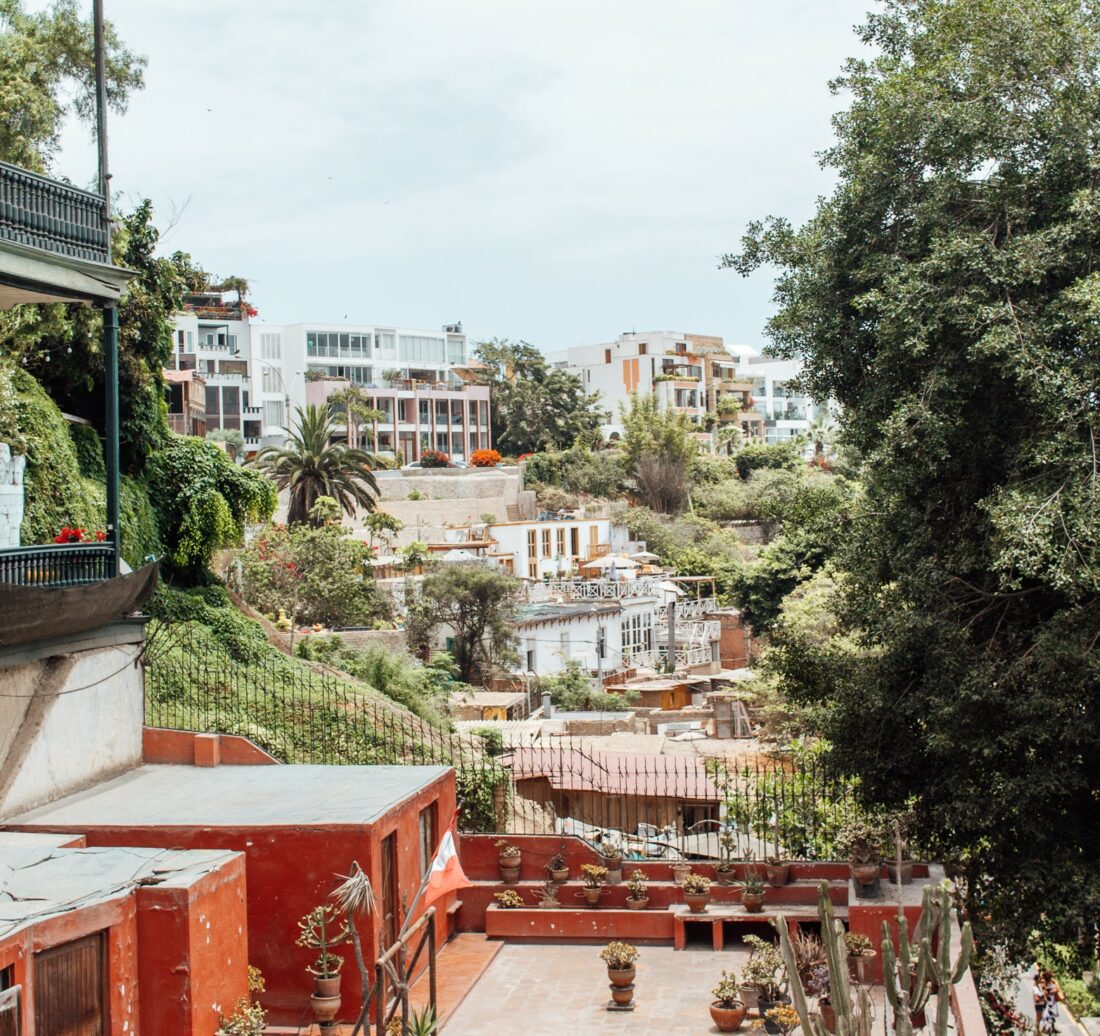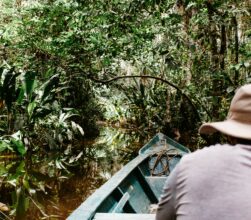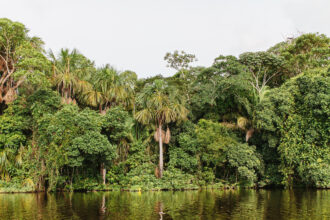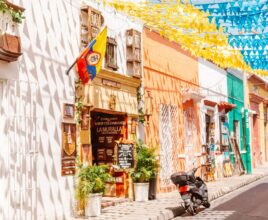We were very ready for a change of scenery when we landed in Lima. We had done some sparing research on Peru’s capital city, but weren’t totally sure what to expect. Would it be the crowded hubub of Mexico City, quaint and scenic like Bogotá, or beautiful yet overrun like Cartagena?
Turns out – none of these. Lima is a presence unto itself. In some areas it’s crowded, noisy, and full of small market stalls selling dozens of every sort of thing. One street’s specialty is medical devices, another caters to sporting goods, yet another is entirely devoted to bicycle repair.
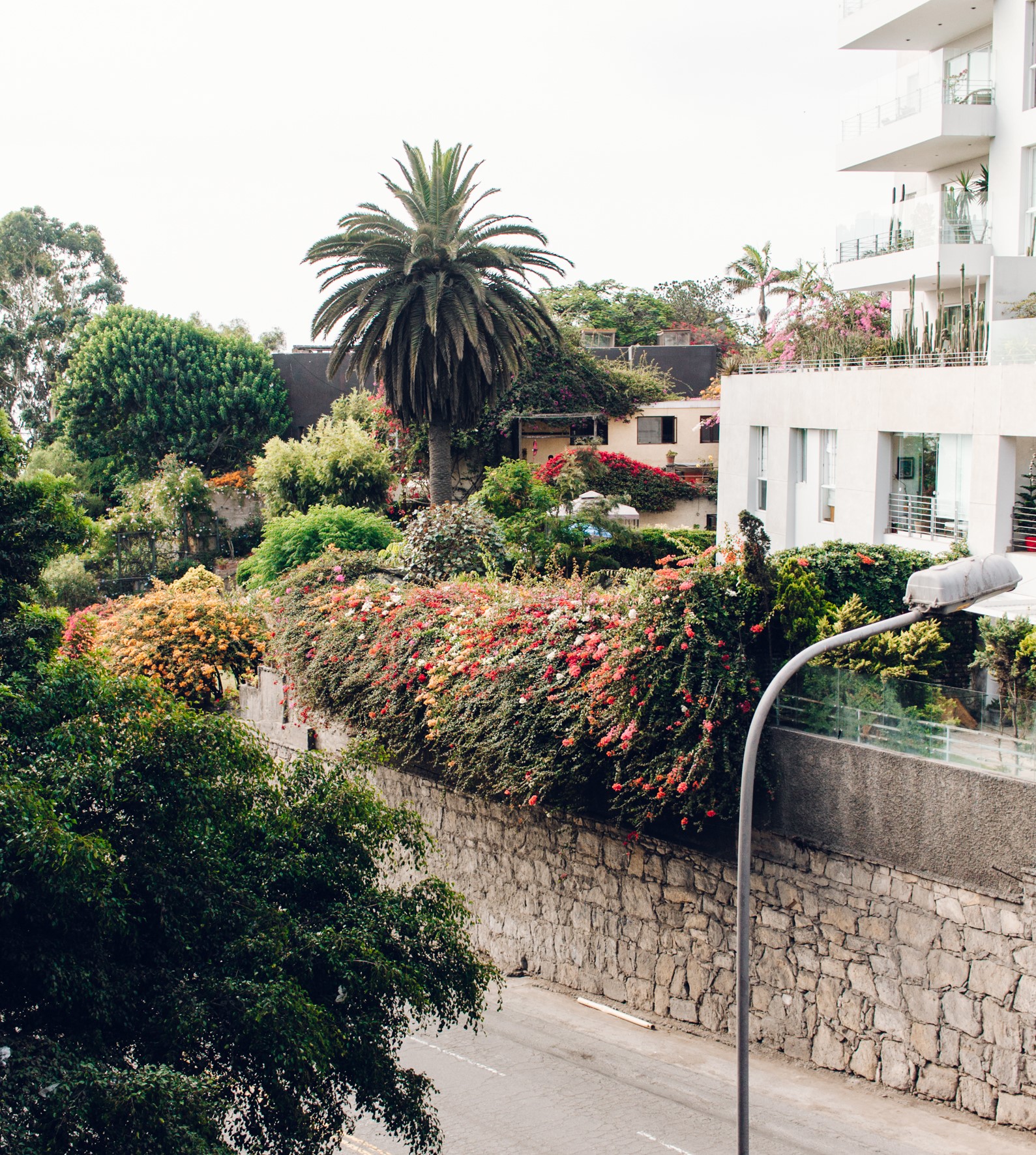
In other neighborhoods, it’s wonderfully open and quiet, with breathtaking beaches and absolutely immaculate landscaping. Limeño buildings tend towards the practical and plain, but their parks and public spaces are uniformly gorgeous, filled with carefully tended flowers and trees.
Overall, we had a great time in Lima – strolling around its boardwalk, visiting its beaches, shopping in its malls, and just soaking up a relaxed, yet urban way of life.
What did we do?
We spent most of our time just walking around the beaches and parks. We also did quite a bit of shopping – picking up a few last-minute pieces for the Amazon.

Beaches
The beaches in Lima are just lovely. Lima itself is up on a cliff, and the beaches are down stairs or steep ramps at the bottom. The cliffside itself is in the process of being landscaped – covered with ivy and bougainvillea. It’s a charming walk, and at the bottom are a series of small parks and sports complexes.
The water itself is cool but swimmable without a wetsuit – low 60s Fahrenheit when we visited in mid-Feburary. The surf breaks are incredible – slow rolling waves just perfect for cruising on a longboard. You’ll see tons of surfers off of the more northern beaches.
Most of the beaches are made of small rocks – I’d call them river rocks, but that’s not quite right as they’re from the Pacific Ocean. There is a really nice sand beach (Playa de Agua Dulce), but it’s all the way south. Be warned – it fills right up, especially on the weekends, but it’s still plenty of fun when it’s packed.
You can rent an umbrella and chairs for a standard rate (15 soles), and you’ll have access to great swimming waters, some of the best people (and cute little kid) watching in South America, and your pick of a constant stream of cheap and tasty food, snack, and meal options from passing vendors. Unlike Cartagena, the vendors aren’t pushy, they just walk by hawking their wares.
The top of the cliffside in the Miraflores and Barranco neighborhoods is also a great sunset stroll – a chain of parks, some with statues and fountains, giving spectacular city and ocean views. We spent a couple of evenings just walking up and down, taking in the best view of the city.
Cooking class
We took our cooking class early, hoping to get some good tips from the chefs about things to see and do in the area. We struck gold with our class, getting both a culinary-school trained chef and a professional tour guide. We learned to make a range of traditional Peruvian cuisine and learned all about its history.
Lomo saltado (“jumping beef”) is a Chinese- Peruvian fusion dish, marrying salty soy sauce, a spread of common Peruvian vegetables, and the omnipresent potatoes of Peru. It gets its name from the shaking of the wok as it’s cooked.
A local favorite is causa limeña (Lima’s cause). This interesting dish is basically a mashed potato sandwich, filled with chicken and vegetables in a sauce (traditionally mayonnaise, we used a sort of pepper relish). It gets its name from the fact that it was invented by the people of Lima in the War of the Pacific as a way to raise funds for the soldiers.
Parks
Lima has absolutely gorgeous parks. The weather must lend itself to a lush growing season – everything was in full, vibrant bloom when we came. The parks all follow the same general pattern – criss-crossing walkways set with trees and statues, beds of neatly-planted flowers set inside well-trimmed grass.
Kennedy Park features a somewhat disturbing sculpture of the 35th president, dedicated in honor of his work in the Alliance for Progress. It also features an extraordinary number of cats – perched on benches, hiding in flower beds, chasing each other up trees, napping in the sun.
Parque de Exposition is the largest park in Lima, located just south of the city center. It’s gorgeous, with lots to do. There are tons of street food vendors all around it, and it’s filled with some of the most impressive statues in the city. We saw lots of people dancing, sleeping, making out, and just wandering around this immense park.
Just south of Parque de Exposition is the Magic Waters Park. It’s supposed to be a beautiful show of light and water, but unfortunately we had to pass because of the extremely long lines to get in. Come early, well before the 7:15 show start time.
Closer to us was the Parque Municipal de Barranco and Parque Federico Villareal. Both of these were just lovely – well maintained, full of lights, benches, and little things to look at. In the Parque Municipal, we always saw cultural productions of some sort – one night it was break dancing, another night it was Capoeira (Brazilian dance fighting).
Parque Frederico Villareal hosts the “Bridge of Sighs”, a wooden bridge across a small street channel hung with string lights where you can seal your commitment to your lover with a smooch.

Centro Historico
Lima’s historic center mostly revolves around the Plaza del Armas. It’s flanked by three impressive colonial buildings and has a nearby mountain as a backdrop. In the center is an impressive fountain. Overall it’s a nice experience, but probably not worth the trek to get there. There are a few other interesting historical buildings nearby, including Lima’s most impressive church, but our impression was that history wasn’t the focus of the city – we’d stick to the beaches, parks, and restaurants next time.
What did we eat (and drink)?
The food in Lima is a little more basic than in Colombia or Mexico City. It tends to follow a formula of protein, salad, and several different starches (much like comida corrente in Cartagena). As a whole it was good, but very hearty, with enormous portions.

Rotisserie
Oh man, this stuff was great. You could get pollo a la brasa almost anywhere – it would be a small salad, and then a quarter chicken and side of fries or rice served with several different savory sauces. The chicken was juicy and tender, meat falling off the bone, with crispy skin and the perfect savory rub. A meal and a half for around 15 soles ($4.50).
Sandwiches
Limeños take their sandwiches very seriously. Each one would be served on a thick roll and would usually have meat, lettuce, tomato, and some kind of sauce. Common meats were shredded chicken, turkey, and ham. Occasionally you’d see a fried egg or fried potato strings. Sangucherías were absolutely everywhere, we lucked out and got a good one just a couple of blocks from our apartment. You’d also see elderly folks selling sacks full of small rolls stuffed with shredded chicken or cheese on the way to the beach and around the parks. Delicious!

Mérito
This was our “nice restaurant” for Lima. We had a prix fixe lunch, and got to try all of their options. We started with some fried polenta sticks and a sour and savory sauce. Our next appetizer course was a simple split pea soup and a salad with thin slices of fish and extremely fresh tomatoes – that was my favorite.
Mains were chicken cutlets in an extremely savory sauce over rice and greens, and fish over lentils and thinly sliced octopus. Both were extremely savory – something of a trend in Limeño cuisine – and rich.
We finished with two desserts – coconut foam over a lemon cake, and a guava tres leches cake with a tiny scoop of mango sorbet. The tres leches cake in particular was just wonderful – sweet, tart, with the perfect amount of saltiness.
Coffee shops
If you’ve been following along, you know we spend a lot of time in coffee shops. Lima was no exception. The coffee shops we went to were all extremely pleasant – lots of flowers and greenery, cute wooden tables, and above all – extremely good coffee. We really enjoyed working at Tostaduría Bisetti, their commitment to the craft of coffee was superb. The food was fresh and ambiance was vibrant at La Bodega Verde. La Panetteria Barranco had beautiful (and tasty) baked goods.

Blu
Best gelato of our lives. With a variety of local flavors, friendly staff, and absolutely divine ice cream, we’re dying to come back.
Fun facts
Peruvians love group fitness! We saw loads of groups of Peruvians working out together – running, playing sports, and especially dancing. The city is full of workout parks and fitness centers, maybe because the food is so rich and filling.
We also saw groups of young people practicing Huayno – a traditional pre-Inca dance. I assume it was for some competition given the number of dance teams, but maybe it was just to keep in shape!
You’ll see a type of dance fighting on occasion – Capoeira. Boys and young men will take turns swinging their legs and ducking each other’s blows to clapping, cheering crowds and thumping music.
The tough stuff
Lima went fairly smoothly, no major difficulties. It’s a temperate place, so the weather was good, and we’ve ironed out most of our day-to-day struggles at this point.
We had a bit of trouble sleeping due to our Airbnb having a small bed and being right near a busy road.
We also had one bummer day – we got news that the Inca Trail, one of our trip highlights, was cancelled. Trying to turn the day around, we went in to the Centro Historico, but I chose a bad drop-off spot and we had to speed-walk for 45 minutes through some really sketchy neighborhoods. The icing on the cake was that we couldn’t get in to the Magic Waters show at the end – the line would have taken us an hour or more to get through.
One dud out of 6 ain’t bad though.
Overall, Lima was wonderful and we’d go back in a heartbeat. It’s one of those places that makes you start running the numbers on buying property. It’s got a great beach scene, beautiful parks, delicious food, ample shopping and friendly people. The weather is mild, people are laid back, and things are still very affordable.
It’s not adios, Lima, it’s hasta lluego.
Next stop: Puerto Maldonado and the Amazon rainforest.
